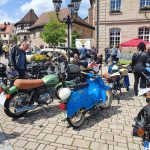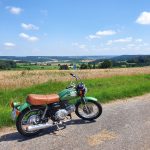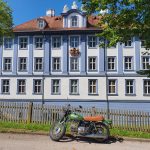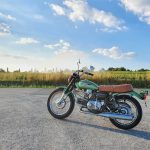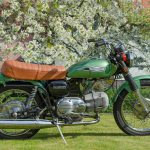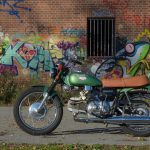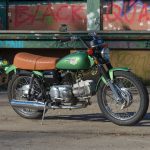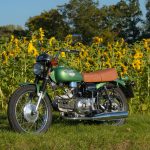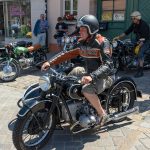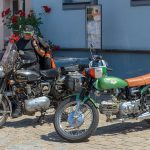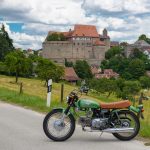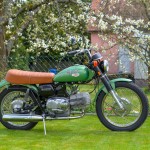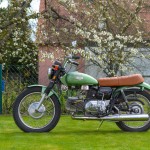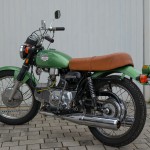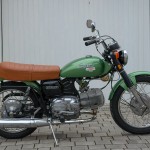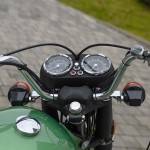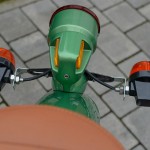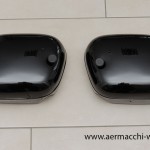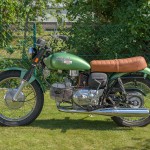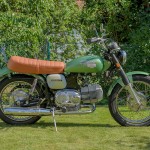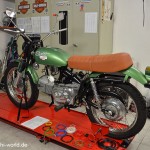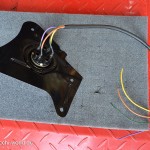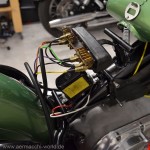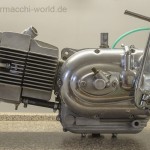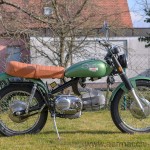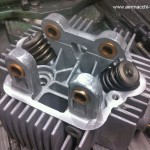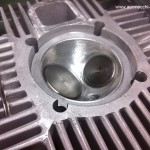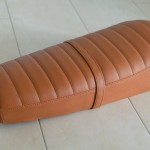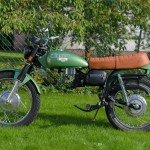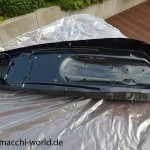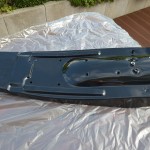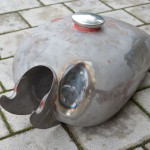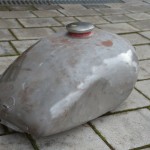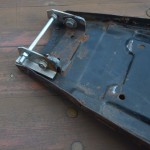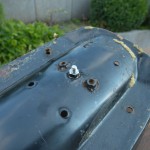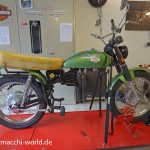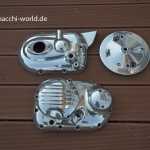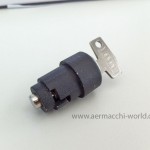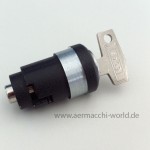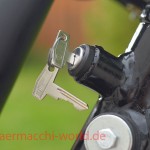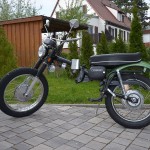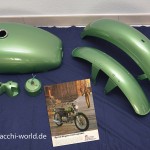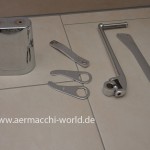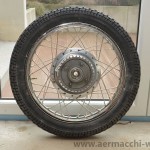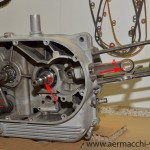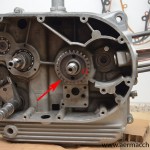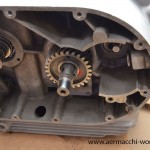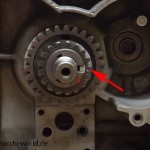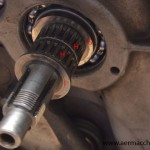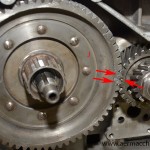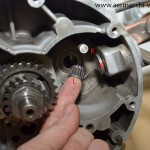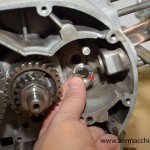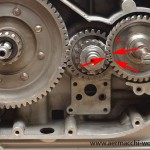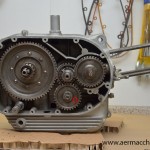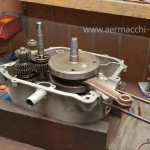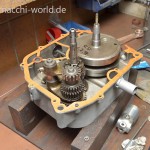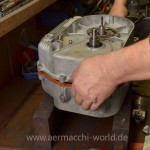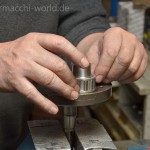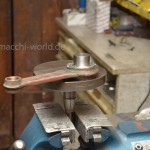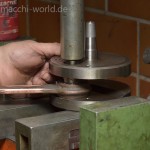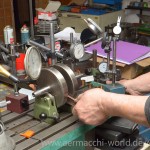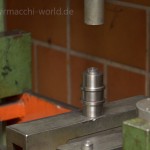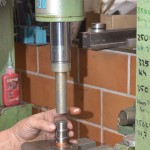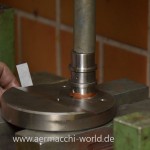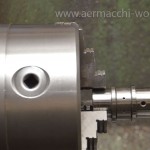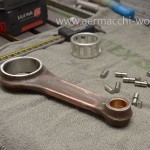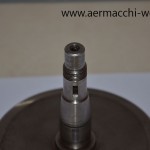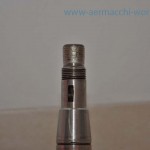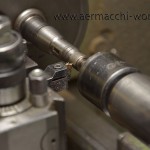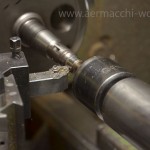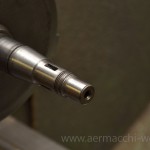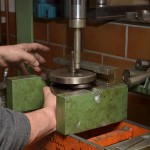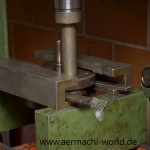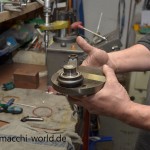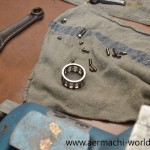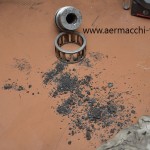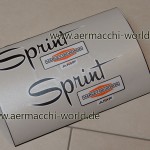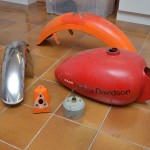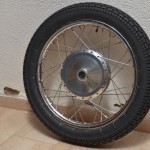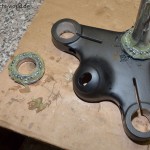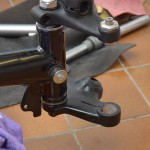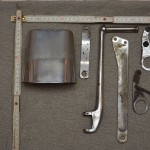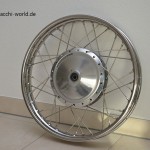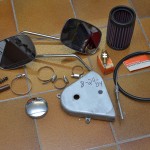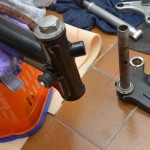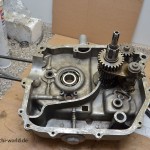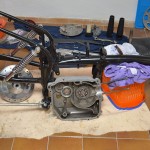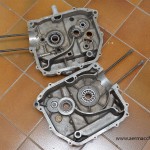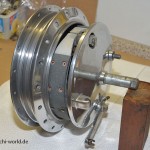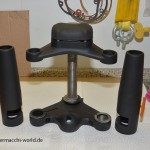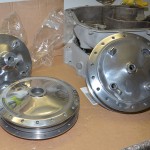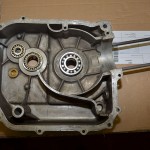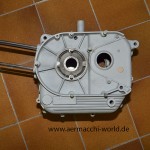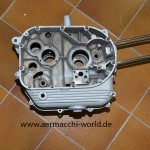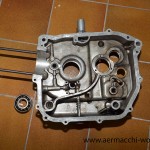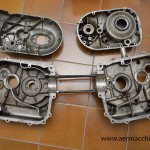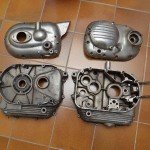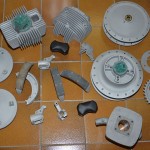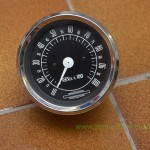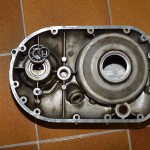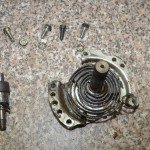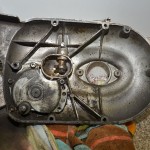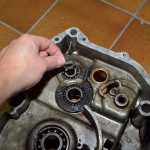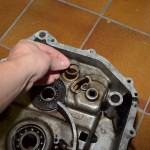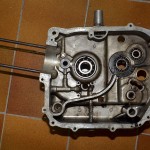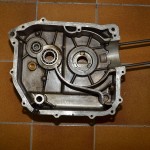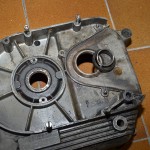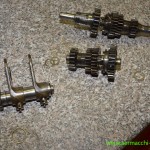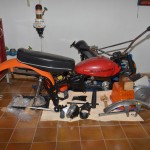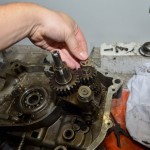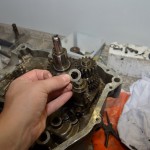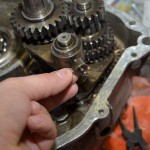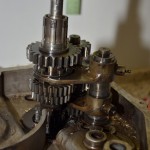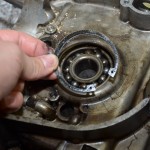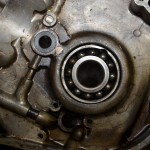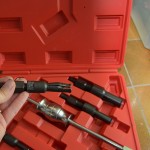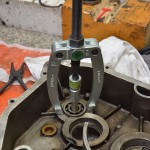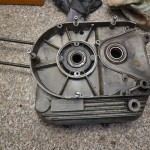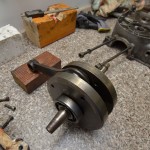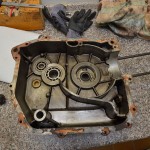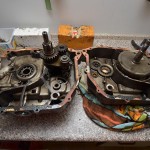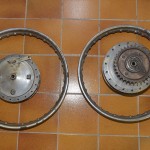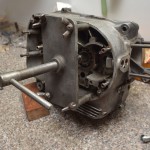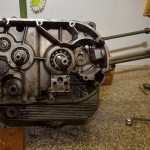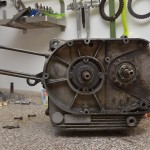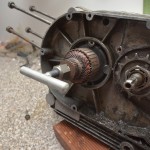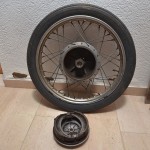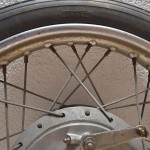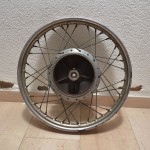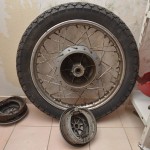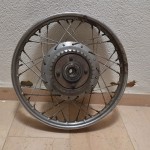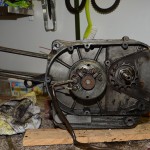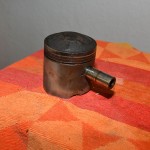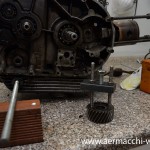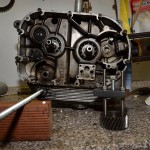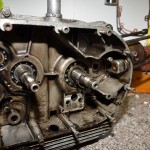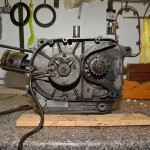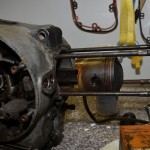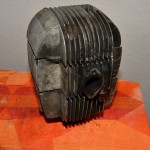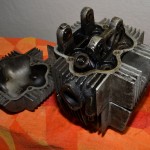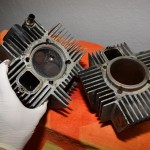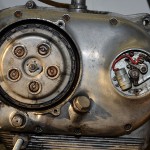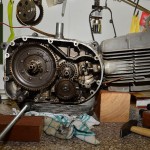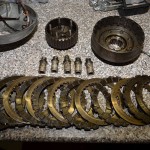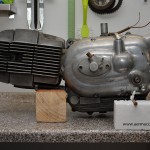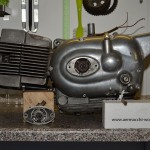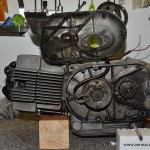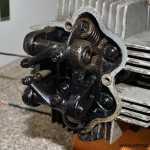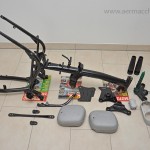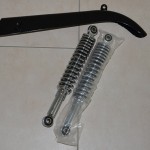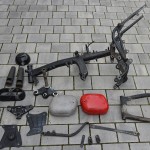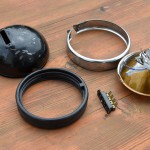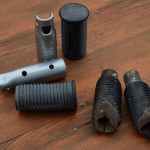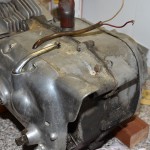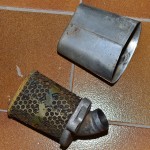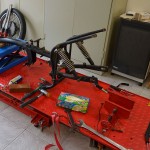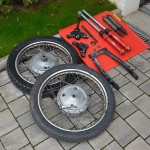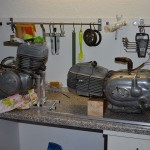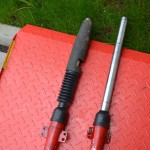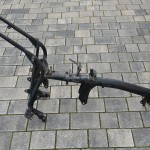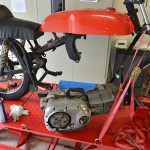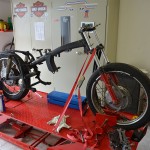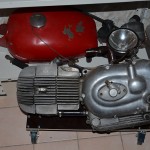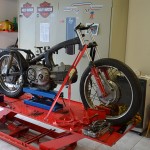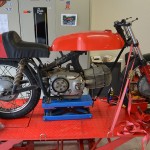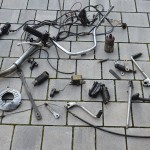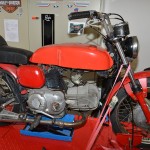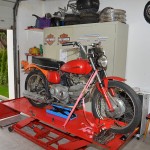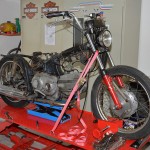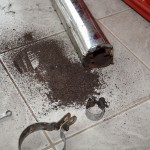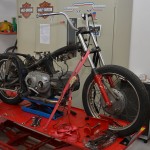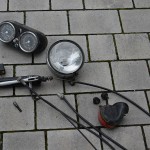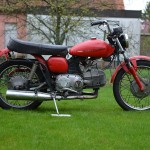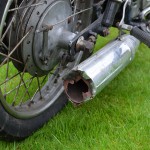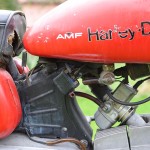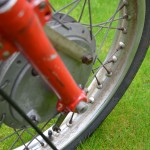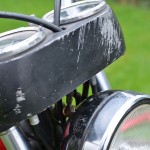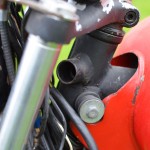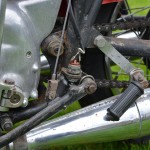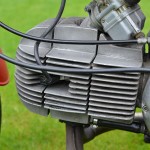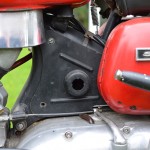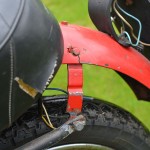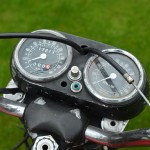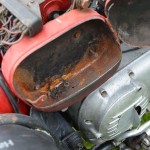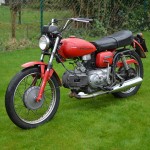Together with a friend I attended the Oldtimer gathering 2022 in Langenzenn. It was suspended for the last two years because of Corona.
I had to modify the seat pan because the gas tank that was originally on my bike had big dents that are very hard to repair. I didn’t know about the damage, because someone filled the holes and repainted it. After removing the paint this was a big surprise. I bought a replacement gas tank on ebay. It had 1972 decals, but I was sure it is not a 1972 gas tank. When it was repainted I noticed the replacement tank is about 5 centimeters longer than my original tank!
Well, the replacement tank fits, but than there is no room for the seat. I relocated the seat 5 centimeters to the back and hopefully this will solve my problem. I will have the pan cleaned and powder coated and the seat will be recovered.
Before you start:
There is no guarantee for the correctness of the information provided. That following steps describe the procedure for my 1970 GT-350. It’s a different procedure on other model years!
To my knowledge (again, without guarantee) this is valid for 1969 to 1972 Sprint 350cc street bikes and not for earlier bikes and not for the 1973-1974 electric start!
Please ailways use a few drops of oil to fit the parts together.
- We start with an empty right side crankcase. Only the shifter pawl carrier (C) is already put in, as it must be inserted before the primary drive gear.
- Pull out the connecting rod (A) to tdc (top dead center), this will move one of the three notches (B) on the flywheel shaft to 3 O’clock position.
- Slide clutch drive gear (D) on shaft of flywheel. It will stop in the correct position because of the conus of the shaft. Don’t turn the shaft! The mark on the clutch drive gear (arrow) is of no meaning at this point.
- Put the woodruf key (E) into notch of the shaft. It must be the notch at 3 O’clock positon while connecting rod is at tdc position!
- Slide pinion gear (F) on shaft with woodruf key in position at 3 O’clock and make sure the mark on the pinion gear points to 3 O’clock also (arrow)! It sits correctly if the surface of the pinion gear touches the surface of the clutch drive gear.
- Put the lock ring and nut on the shaft. One latch will be bend into the notch of the pinion gear the other around the flat side of the nut after the nut is tightend! (These steps are not pictured)
- When tightening the nut you must make sure the shaft will not turn.
- Next we put the primary drive gear on the transmission shaft. On that picture you can see what parts must be fitted inside the gear. A thick spacer (G) that must have the correct thickness to arrange the primary gear in one line with the clutch drive gear (D).
- Inside the gear are two roller bearings. On top of the bearings will fit another distant spacer.
- Put the primary drive gear (J) on transmission shaft and don’t forget the stuff explained in Pic 5. You will need probably 2-3 trys to make the two marks fit the one mark of the clutch drive gear. For that operation you may turn the flywheel shaft with the clutch drive gear.
- The marks on the primary drive gear (J) and the clutch drive gear (D) however are not time critical. It’s just the way the teeth are fitted together by factory. That’s the reason for using gears always in matched sets! If you don’t, you will risk damage to gears.
- Next we put the roller bearing (L) for the camshaft into crankcase and also set the two tappet guides in (K).
- A spacer will be used on camshaft to allign the camshaft gear exactly to the pinion gear.
- I will not describe how to fit the camshaft gear to the camshaft as it can only be fitted in one direction
- Put the camshaft with gear (N) into the roller bearing (Pic 7.) and arrange the two marks with the one mark on the pinion gear (F).
- Screw the oil pump into case (4 screws) and make sure the O-Ring is still on the oil pump for a sealing to the crankcase. Put the gear on the oil pump shaft. It is not time critical and has no mark so it doesn’t matter how it will fit together with the pinion gear.
Here you can see how we pressed the crankpin from the flywheel and the oil dirt we found inside the crankpin after drilling out the plug. This is a typical 4-Stroke-Aermacchi problem and the reason you really should change the oil once a year or every 1000 miles. Rudolf decided the rod is used up and that I will need a new one.
A lot of fresh grease and 50x new bearing balls (8854) for the NOS fork stem. The fork stem I got with the bike obviously got pressed together in the wrong way as the notch for the steering lock was on the wrong side.
The parts shown on the last picture like airfilter housing, kickstarer and some other stuff went out for rechroming that day.
The inside of the engine looks not very good at all. Spark advance is broken and the primary gear is totally worn out. I am pretty sure more bad surprises will come, going deeper into the engine. I also noticed that the left engine cover has a 1971 production time stamp and the right side a 1968. I am pretty sure someone had the engine disassembled before me.
The engine is the so called “ashtray head”. The cylinder and head are designed for the US market. It replaced the earlier, classic Aermacchi cylinder/head. Customers in Europe didn’t like that design much and so it was available in Europe just for a short time period from 1969 to 1970 before they changed back to the classic knucklehead with the 1971 models. In US they kept the ashtray design until the arrival of the 1973 model of the Harley-Davidson Sprint.
Engine crankcase: L988
The GT once belonged to a fast rider. Those footpegs tell the whole story and it fits well into the picture together with the modifications made to this bike with a later and lighter seat, lighter tail light, missing fork dust-covers, cut-out clutch cover and other modifications – all with the goal of getting the bike as light as possible.
Because of the bad overall condition of the bike I assume the previous owner once lost interest in the bike and had it stored outside somewhere in a tiny Italian alley for decades.
Those footpegs will go directly into the trash bin. I have restored footpegs and reproduction rubbers in my inventory. The engine will get a good cleaning before disassembling and the airfilter will be replaced by a K&N replacement.
It is done, the bike is very handy now and easily fits into a large rack. The hardest part was getting the fork out of the frame. Heat and pure force did the trick. The weldseams look like having been done by an apprentice in his first year. Never seen such bad weldseams on my other Aermacchis.
The tires, rims and spokes will be replaced later. Hubs will be polished and reused. The oil in the front fork – or better what is left – is just mud, but there is hope that the fork may be repairable. The shocks are totally broken and can’t be reused.
So, here we are. I have started disassembling the bike. I have got this small original Ala d’Oro gas tank and seat as decoration in my garage. I couldn’t resist the idea of building a café racer and so I tried how those parts might look. However, I will restore it back to original condition, but ONE DAY I might build a café racer!
Oh yes, those silencers look pretty good. Just a little cleaning of the “Frankfurter Töpfe” and I can right use them again. 😉 Luckily I bought NOS replacements years ago and stored them safely in my basement.
I collected parts that need to be replaced or were missing on my GT-350. The chain guard is in bad shape and will be replaced by this usable one after painting. The old style fork covers have been missing on my bike. They are not necessary but they were mounted by factory in 1970. Those mufflers are perfect NOS parts which costed me some money. I know, most people replace them by a single exhaust as a one-in-two exhaust just makes the bike heavier, but I like it as factory original as possible.
The orange one is the correct fender for the 1970 model. Bought it on ebay USA and had it sent to Germany. That is why it has got the tail light as used on the SS-350 (export) models with HD vin. When restoring, I will use a European style tail light, which looks modern and sleek compared to the US version.
My first picture of the GT-350. I took it at a resting area at the “Autobahn” on my way home from the seller, who lives close to “Lake Constance”, which is a 2 hour car ride away from me. Well, the bike wasn’t too expensive, but it is in a worse condition as it may seem at first sight.
It has got an Italian VIN and still the Italian license plate, which means this bike wasn’t for export which makes it a GT-350 and not a SS-350. Differences are minor to a US-model. Odometer showed 17128 kilometers and the bike was in an overall bad condition.
